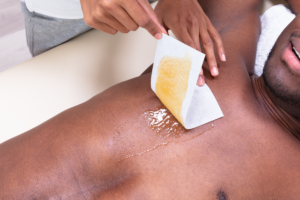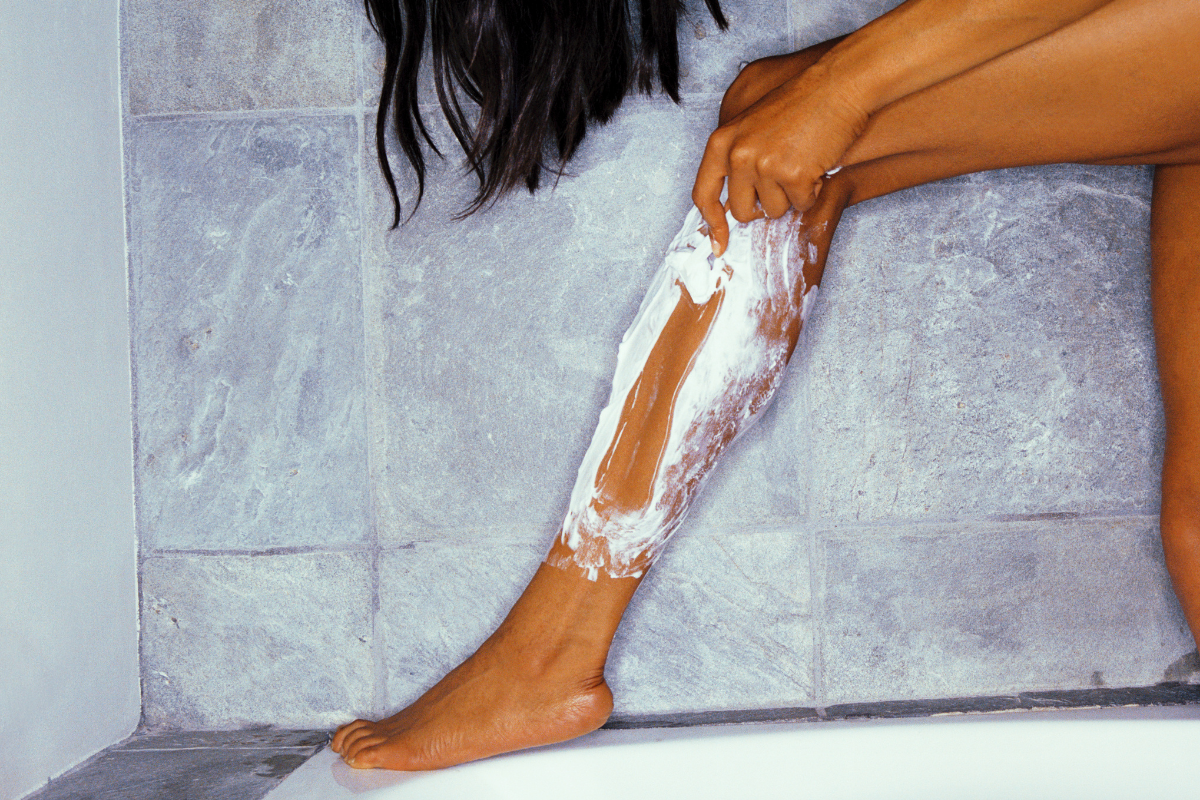While it is true that hair removal can sometimes irritate your hidradenitis suppurativa, it is always a personal choice. Hair removal should not be obligatory, but it shouldn’t be off-limits either. Your body your decisions.
Not all hair removal methods are the same. Some are more skin-damaging than others. Some may increase your chances of getting an infection. And one may even be a treatment for HS.
Also, you may choose not to remove all your hair but rather trim. Keep in mind that your HS stage may also influence which hair removal options are available to you. And no two methods carry the same risks or benefits.
When I was diagnosed, my doctor recommended that I stop removing my underarm hair. It wasn’t a recommendation I took. I researched my options. And I am cautious about how I go about it. Today we are looking at the pros and cons of each method. That way, you can make the right decisions for yourself.
Shaving

Shaving is probably the most common method of hair removal. It is inexpensive and less painful than waxing. Shaving is using a razor to cut the hair as close to the skin as possible. However, a sharp instrument near the skin is bound to cause problems sometimes.
Most people who shave see some skin damage. Common skin conditions associated with shaving are razor burn or ingrown hairs. You may nick the skin as well. If you cut yourself, remember to disinfect the area to prevent infection.
You must find the products that work for you. Gels and foams might irritate your skin. If you decide to go down this route, make sure you find those products that work for you. And never shave during a flare-up.
But we will talk about that later.
Waxing

Waxing is lots of people’s main method of hair removal. It can be expensive if it is professionally done. But hair doesn’t grow back as fast, and the results are better.
But, a side effect of waxing is folliculitis. Folliculitis is a skin condition caused by fungal or bacterial infections. The skin becomes inflamed, often from hair removal. Bacteria get into the skin and causes small sore red bumps.
According to Health Central, waxing may not remove all of the hair. The remnants can create an opening for bacteria to get in. So, for those of us with HS, it might be more trouble than its worth.
Laser Hair Removal

Laser hair removal is interesting. Not only is it a semi-permanent method of hair removal, but it may also be a treatment for HS. Laser hair removal kills the hair follicle. And as we know, blocked hair follicles are one of the known causes of HS.
Treatments involve using light to burn part of the hair follicle. Thus, preventing or delaying growth. So, not only can you get rid of hair, but it may also prevent the follicle from becoming blocked in the future.
However, there are three downsides. The first is it can be costly. Prices vary from country to country. Keep in mind for one area of your body, you may need multiple treatments. The second downside is its not for everyone. Those who have stage 3 HS may not be suitable. And despite the treatment, the follicle can recover.
Trimming

An alternative to hair removal is trimming. It is precisely what it sounds like. You simply trim the hair on your body the way one might on their head. How much to trim is a matter of personal preference. Some people just keep their hair tidy. Others cut the hair very close to the skin.
Keep in mind that many cultures consider hairless bodies as most desirable. But this doesn’t mean they are. We learn to hate body hair; it is not objectively wrong. There should be no rules. But it is natural and having body hair only suggests you are human. Nothing more.
What Never to Do

Never use inappropriate tools and products. Dry shaving is hair removal without gel or foam. This can cause a lot of damage to your skin. Which, in turn, could cause a flare-up. Do not attempt that at home. If you use disposable razors, change them regularly. Dull razors are more likely to cause nicks and cuts.
Never leave damaged skin unaided. Keep the area clean and use a dressing if needed. Most of us who shave our legs worry little about minor shaving cuts. But in areas prone to HS, small cuts can lead to big flare-ups.
Do not shave or wax while you are having a flare-up. Hair removal, while you have an active legion, might damage it or the surrounding skin. Which, in turn, may lead to infection. Even if you only have one lesion at a time, you can irritate the skin or nick the lump.
I realise all of this sounds a little off-putting. But when you have a skin condition like HS, you must give hair removal a little more thought. That shouldn’t prevent you from doing it if you wish. Make sure you do your research. And make sure you have the best information you can. Your decision should be one you are happy with, but that doesn’t harm you. And as always, if you have questions, consult your doctor.
About The Author
Shannon Sweeney is a psychology and sociology student from Ireland. She is also living with HS and has a keen interest in lifestyle, wellbeing and hidradenitis suppurativa.


